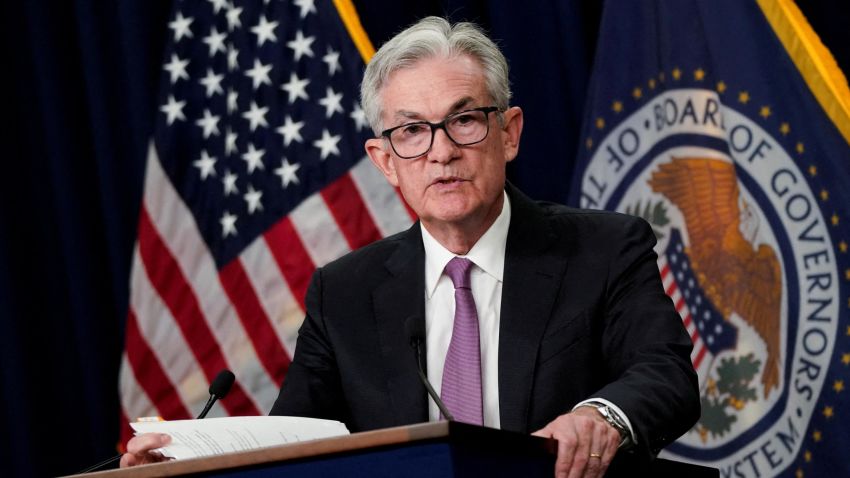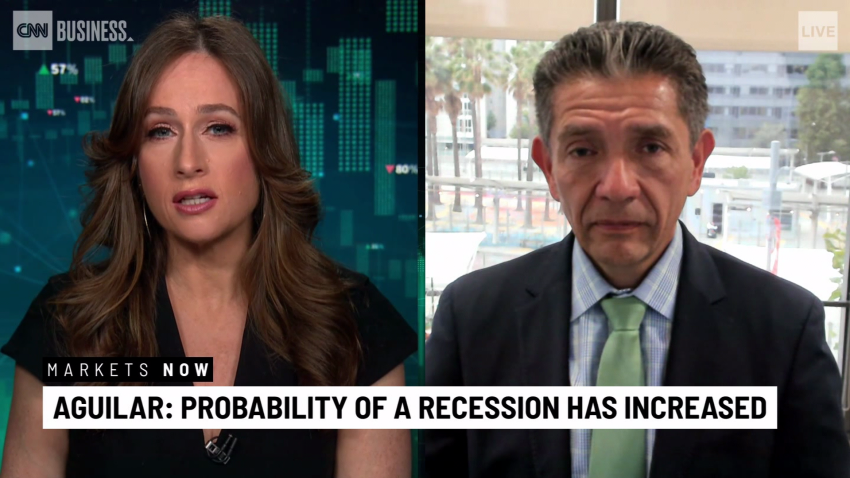As prices continue to rise, Americans are becoming increasingly reliant on credit cards to make purchases. And now, with the Federal Reserve’s latest three-quarter-percentage point hike, many of them will be paying more for the debt they’ve been accumulating.
Interest rates on nearly all credit cards and home equity lines of credit will increase after this latest rate hike, and borrowers with variable interest rates will notice the difference quickly, said Ted Rossman, senior industry analyst at Bankrate.
“It’s pretty much right away, within a statement cycle or two,” he said.
At a little over 18%, the average annual percentage rate (APR) on new credit cards is within a percentage point of its all-time high of 19% set in July of 1991, according to Rossman. “The effect on existing credit card borrowers is probably actually worse,” he said, because of the rate hikes the Fed has undertaken already this year. “Chances are your credit card is already 2.25 percentage points higher than it was in March.”
Despite the climbing rates, credit card debt is rapidly approaching the all-time record set in the fourth quarter of 2019, Rossman said.

Personal finance pros say the best strategy when rates are rising is to pay down or consolidate debts, but as prices on all sorts of goods and services rise, Americans are gorging on debt of all stripes. Borrowers are both opening new cards and charging more on the ones they already have.
“What they’re doing is borrowing future income by taking on debt. That’s why we are seeing a big surge in credit card borrowing right now… to maintain their current standard of living,” said Steve Rick, chief economist at CUNA Mutual Group.
In August, the Federal Reserve Bank of New York said that total household debt grew in the second quarter by $312 billion to a total of $16.15 trillion. Credit cards were a big cause of that: In the second quarter, 233 million new credit accounts were opened, the largest increase since 2008. Of the new debt that accumulated during that quarter, $46 billion was credit card debt.
Credit bureau TransUnion found that there are more credit cards today, and there is more debt on those cards. TransUnion said 161.6 million people in the US — roughly half of the total population — had access to a credit card in the second quarter, a jump from 153.3 million a year earlier. In that same time frame, the average debt per borrower rose from $4,817 to $5,270.
Higher prices are feeding America’s appetite for credit. “Inflation is certainly a significant factor. If the same services and goods that they have always been consuming suddenly are more expensive, consumers may use credit to help with the short-term funding of those purchases,” said Michele Ranieri, vice president of U.S. research and consulting at TransUnion. “For many consumers, credit is not just about added debt but also serves as a necessary spending vehicle.”
Ranieri framed this as a positive development — as long as borrowers can keep up.
“The fact that more consumers have access to credit is positive as long as we don’t see a significant increase in delinquencies,” she said. However, she acknowledged that the rapid adoption of Buy Now, Pay Later plans, which typically aren’t captured in conventional banking and consumer credit reporting, could be obscuring the true picture of some debtors’ positions.
“It takes years to accumulate behaviors of new products like BNPL to accurately analyze them and incorporate them into consumer credit scores and credit decisions,” she said. “We have been actively working with lenders to ensure that as much debt as possible is being reflected on consumer credit reports.”
Borrowers with lower income, worse credit adding debt
Data from Bank of America reflects higher rates of borrowing among lower income Americans. Credit utilization, a ratio of how much available credit a person has used as a percentage of their credit limit, has been rising since early 2021. According to Bank of America, households with an annual income of less than $50,000 have a roughly 28% credit utilization ratio, compared to around 23% for households with an income higher than $125,000.
“We’re acknowledging that the consumer is under pressure, but the strong wage growth, the robust labor market and their higher savings deposit levels … are all buffers,” said David Tinsley, senior economist at the Bank of America Institute.
TransUnion found that over the past year or so, unsecured debt held by subprime borrowers climbed by roughly four percentage points. Observers worry that if economic conditions sour, this debt could quickly become unmanageable, especially since subprime borrowers pay higher interest rates and generally earn less than prime borrowers.
Transunion said the rate of serious delinquency — debt that is past due by 90 days or more — across the consumer credit landscape is within its pre-pandemic range, but has begun to rise.
Some consider this a troubling sign, especially with more rate hikes on the table between now and the end of the year that will increase borrowers’ interest rates even more. “We are starting to see delinquencies go up a bit, especially around subprime. There kind of are some warning signs, especially around the margins,” Rossman said.
More debt means less money for holiday shopping
The combination of higher interest rates and higher prices overall could be a headwind for retailers this holiday season, especially if rising home heating costs gobble up even more of the average family’s budget.
“It seems that the holiday shopping forecast might be on the wrong side of the inflation divide,” Rossman said. “There are reasons to think people will be pulling back.”
A number of executives have already sounded the alarm, and the upcoming round of corporate earnings will indicate if the dominoes are already beginning to fall. Last week, FedEx reported weaker-than-expected results and withdrew its full-year guidance, triggering worry on Wall Street about what this portends for the coming months, including retailers’ all-important holiday season.
“We don’t expect this Christmas to be as robust as it was last Christmas,” Rick said. “It’s going to put a squeeze on people’s spending when they’re spending more money on interest… Something’s got to give. You’ve only got so much income to spread around.”






